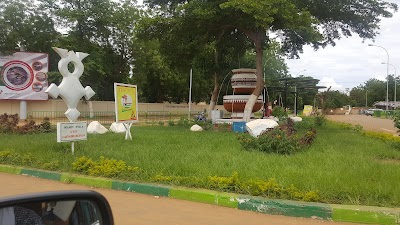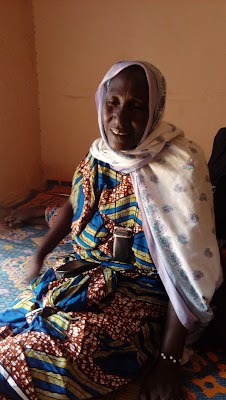Gao Museum (Musée de Gao)
Overview
The Gao Museum, nestled in the historic Gao Region of Mali, stands as a vibrant symbol of cultural and archaeological significance in West Africa. This captivating museum invites visitors to embark on an enriching journey through the rich heritage of the region, offering a fascinating glimpse into the historical grandeur of the ancient city of Gao, which once thrived as a pivotal hub within the Mali Empire.
Originally established to safeguard the remnants of Gao’s illustrious past, the museum houses an impressive collection of artifacts spanning several centuries. As visitors explore the diverse exhibits, they will be captivated by the narrative that unfolds—from Gao's humble beginnings as a small settlement to its emergence as a powerful empire. Here, ancient maps, manuscripts, and traditional clothing serve as tangible links to the past, each telling a unique part of Gao's storied history.
One of the museum's most compelling features is its focus on the Songhai Empire, which flourished during the 15th and 16th centuries. The exhibits delve into the empire's political and social structures, providing context to the significant role Gao played as a center of commerce, scholarship, and cultural exchange. Artifacts such as trade goods, weaponry, and everyday items offer an intimate glimpse into the daily lives of the region's inhabitants, enriching visitors' understanding of this dynamic period in history.
A particular highlight of the museum is the reconstruction of ancient architectural wonders. The Great Mosque of Gao, reconstructed based on archaeological findings, stands as a testament to the city's former glory. This exemplary piece of Sahelian architecture is celebrated for its mud-brick construction and intricate design, showcasing the craftsmanship and ingenuity of ancient builders. Additionally, the museum features detailed models and historical narratives of the Tomb of Askia, a UNESCO World Heritage Site, illuminating its significance as the final resting place of Emperor Askia Mohammad I.
Beyond its historical exhibits, the Gao Museum also highlights the region's diverse cultural traditions. A vibrant array of traditional musical instruments, beautifully woven textiles, and ceremonial masks on display invites visitors to appreciate the artistic and cultural vibrancy of Gao's various ethnic groups. These exhibits underscore the harmonious blend of influences that have shaped the cultural landscape of the area over the centuries.
For those intrigued by archaeology, the museum serves as a treasure trove of information on various excavation sites in and around Gao. Detailed explanations and illustrations guide visitors through significant archaeological discoveries, including ancient pottery, coins, and inscriptions that reveal the extensive trade networks stretching across the Sahara and beyond. This aspect of the museum is particularly fascinating for those eager to understand the historical significance of trans-Saharan trade routes.
Importantly, the museum is not solely a retrospective of the past; it actively engages with the present-day cultural practices and traditions of local communities. Regular workshops and exhibitions promote traditional crafts, storytelling, and other cultural practices, creating a dynamic space where history and contemporary culture converge. These activities provide tourists with an immersive experience, allowing them to interact with local artisans and participate in the vibrant celebration of Gao's living heritage.
In addition to its rich offerings, the Gao Museum is strategically located near several other historical landmarks. Visitors can plan extended trips to explore nearby attractions such as the ancient city ruins of Gao-Saney and the scenic banks of the Niger River. For adventurers, the surrounding landscape presents a unique opportunity to experience the desert environment, complete with guided tours that provide insight into the ecology and lifestyle of nomadic communities.
In conclusion, the Gao Museum in Mali is an essential destination for travelers seeking to immerse themselves in the historical and cultural tapestry of West Africa. With its extensive collection of artifacts, reconstructions of historic edifices, and vibrant cultural exhibits, the museum not only preserves the legacy of the Gao Region but also brings it vividly to life for all who walk through its doors. A visit to the Gao Museum is more than just a journey through time; it is an invitation to experience the enduring spirit of a region that has been a beacon of culture and civilization for centuries.





